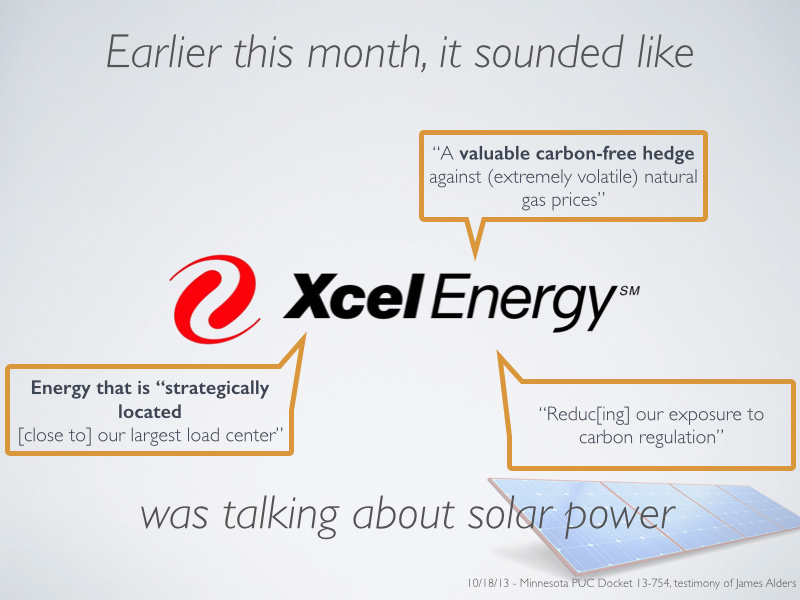Two weeks ago, I listened – incredulously – to Minnesota’s largest utility, Xcel Energy, suggest that solar energy offers its ratepayers no value as an environmental hedge against carbon emissions or as a price hedge against natural gas fuel price fluctuations.
See and share the infographic related to this post
But just three days later, Xcel was singing a different tune [docket pdf] to the state’s public utilities commission. In fact, the utility was touting the benefits of its nuclear power capacity, because (in the words of James Alder of Xcel Energy):
- “It provides the Company and its customers a valuable hedge against potential increases in fossil fuel costs.” (p. 9)
- It avoids emissions of sulfur dioxide, nitrogen oxide, and carbon dioxide (chart on p. 9)
- It is “strategically located [close to] our largest load center” (p. 10)
- Without it, “future levels of natural gas consumption and…market purchases [of electricity] would be higher, creating higher cost uncertainty for our customers” (p. 11). “The price of these energy resources has been extremely volatile.” (p. 12)
- It “will reduce our exposure to carbon regulation and will lower the cost of compliance with any CO2 goal or target level [like Minnesota 80% reduction by 2050].” (p. 11)
But could “it” be solar power?
Not according to Xcel. Xcel was defending a more than 100% cost overrun upgrading one of its two nuclear power plants in Minnesota. They’re interested in big numbers in front of the public utility commission, where a high environmental value means more money from ratepayers to cover their shareholders’ interest.
When it comes to solar – that the utility buys from others and has smaller value to shareholders – the lower the value, the better.
With a utility like this, it’s a wonder that Boulder, CO, is the only Xcel-served city (so far) to switch to a locally-controlled, municipal utility. Who’s next? And how will regulators in Minnesota hold the utility accountable for its hypocritical comments on the value of solar?




